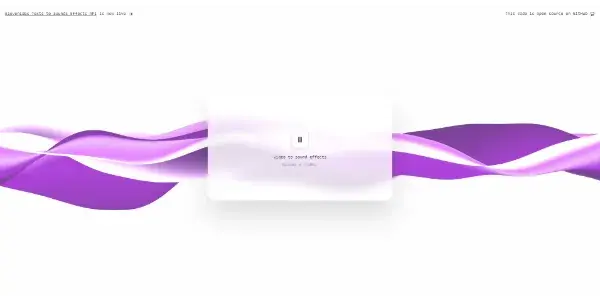Video to Sounds Effects

Bring your creations to life with an AI that generates customized sound effects for your videos via a prompt: sound effects, ambience, noise effects, music, etc.
Revolutionizing Video Production: AI-Powered Video to Sound Effects
The landscape of video editing is constantly evolving, and the integration of artificial intelligence is rapidly transforming how creators approach sound design. One particularly exciting development is the emergence of AI tools capable of generating custom sound effects directly from video content. This article explores a free AI tool that bridges the gap between visuals and audio, offering a powerful and accessible solution for enhancing video productions.
What the Tool Does
This innovative AI tool allows users to generate bespoke sound effects for their videos based on text prompts. Simply input a description of the desired sound – be it a specific sound effect (e.g., "creaking door," "whooshing wind"), ambient soundscape (e.g., "busy city street," "calm forest"), noise effects (e.g., "rain on a window," "distant thunder"), or even musical elements – and the AI will generate a corresponding audio track tailored to the video's visual content. This eliminates the need for extensive sound libraries or manual sound design, streamlining the video production workflow significantly.
Main Features and Benefits
- Automated Sound Effect Generation: The core functionality lies in its ability to automatically generate sound effects from textual descriptions, saving creators considerable time and effort.
- Customization through Prompts: Users have complete control over the generated audio through detailed prompts, enabling precise customization to match the video's atmosphere and narrative.
- Versatile Sound Types: The tool supports a wide range of sound categories, including sound effects, ambience, noise, and even rudimentary musical elements, offering comprehensive audio solutions.
- Seamless Integration: While the specifics of integration aren't detailed, the implication is straightforward import/export functionality for easy use with video editing software.
- Free Access: The tool's free pricing model makes it accessible to a broad audience, regardless of budget constraints.
Use Cases and Applications
This AI-powered tool finds application in numerous video production scenarios:
- YouTube Content Creators: Quickly and easily add professional-sounding effects to enhance the viewing experience.
- Independent Filmmakers: Create immersive soundscapes on a budget, focusing on creative vision rather than extensive audio post-production.
- Corporate Video Producers: Generate branded audio elements for presentations and marketing materials, maintaining a consistent sonic identity.
- Educational Video Developers: Improve the engagement of educational content with relevant and dynamically generated sounds.
- Gamers and Streamers: Enhance gameplay videos and live streams with dynamic and reactive sound design.
Comparison to Similar Tools
While several other AI-powered audio tools exist, this particular tool stands out due to its free accessibility. Many competitive tools offer similar functionality but often require subscriptions or one-time purchases. This free offering dramatically lowers the barrier to entry for creators, especially those starting out or with limited budgets. A direct comparison requires specific knowledge of competitor features and pricing, but the free access is a significant advantage. However, it is important to consider potential limitations in audio quality and variety compared to paid, more advanced tools.
Pricing Information
This AI-powered video-to-sound effects tool is currently offered completely free of charge. This makes it a highly attractive option for creators looking to improve their video productions without incurring any costs. However, free access may be subject to limitations (e.g., processing power, watermarks, or feature restrictions) which should be investigated further before serious project use.
Conclusion
The free AI-powered video-to-sound effects tool represents a significant advancement in video production technology, democratizing access to high-quality audio design. While it might not replace professional sound designers entirely, it serves as an invaluable asset for creators seeking to enhance their video projects efficiently and affordably. Its ease of use, versatility, and free pricing make it a compelling option for a broad spectrum of users. Further investigation into specific limitations associated with the free access model is recommended before adoption for critical projects.